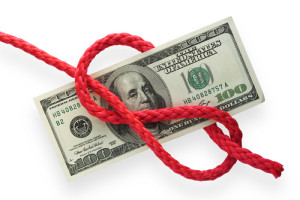 The statisticians may tell us that the recession has been over for three or four years and that incomes have returned to pre-crisis levels. But for millions of people in the UK, the reality is that times are still hard and money short.
The statisticians may tell us that the recession has been over for three or four years and that incomes have returned to pre-crisis levels. But for millions of people in the UK, the reality is that times are still hard and money short.
The good news, however, is that while you may have had a difficult year financially during 2015, there is no reason why you can’t make a New Year’s resolution to get your finances back on track in 2016. The situation is rarely hopeless, particularly if you are in work or have some other regular income. Even if you have large unsecured debts, there is usually a way for you to start reducing them and increase your disposable income at the same time.
If you want to tackle your financial issues in the year ahead, then you’re going to need some discipline and some determination to change the way that you may have behaved over the last few years. Getting your finances back on track may not be easy but it is probably simpler than you think:
1. Stop beating yourself up
This is a prerequisite if you want to reduce your anxiety levels and make a start on tackling whatever financial problems you may currently be facing. It’s human nature to keep going over past mistakes and blaming oneself for silly decisions but what is done is done and now is the time to drop the blame and start concentrating on the future. Learn to accept what has happened and move on, concentrating instead on implementing positive steps to improve your financial outlook.
2. Make a financial inventory
Do you actually know how much you owe banks, mortgage companies and other financial organisations? It’s important to have a grasp of your total liabilities so that you can put in place long-term plans to repay this debt entirely. That means making an inventory of everything you owe – both secured and unsecured – as well as the remaining loan terms and the interest rates which you are being charged on each loan and credit card.
3. Prioritise credit with higher interest rates
If you’re going to make inroads into your debts in 2016 and relieve the pressure you’re under, then you should start increasing the amounts you repay on the mortgages, loans and credit cards that charge the higher amounts of interest. This is the only way that you’ll be able to increase the speed that you reduce your total amount of debts.
4. Make a list of everything you spend for a month
If you’ve got Excel or other spreadsheet software and know how to use it, then this is a brilliant tool for doing this important task. Make sure you list all of your income and all of your expenditures. Don’t be tempted to miss out things like coffees from the coffee shop or the odd treat – you need to be completely honest with yourself about where your money is going before you progress onto the next step.
5. Make a household budget
Once you’ve worked out everything you spend for a month, you’ll be in a good position to set a household budget. Using your spreadsheet program, list all outgoings (with the fixed ones at the top) and all of your income. Let the software work out totals (if you know how) and then calculate whether you should have money left over or if you are spending more than you earn. If it’s the latter, look at the non-essentials on your list and consider what to cut. Think about your food budget – could this be reduced either by using a cheaper supermarket or by cutting out some of the items which might be considered luxuries? The household budget will make it much easier to see where you can save money and divert that into reducing your household debt.
6. Consider consolidating debt
If the amount you’re paying in interest, fees and other charges is overwhelming you, you might want to make 2016 the year when you consolidate all those cards and other loans into a single, monthly repayments. Plenty of companies beyond the high street banks offer consolidation loans and the amount of interest you’ll pay may be surprisingly lower than you’re currently used to. The amounts on offer go all the way up to £25,000 for unsecured loans and even higher if you consider secured lending.
7. When you’ve paid off a card, close it
If you’ve got unused credit available, there is always going to be the temptation to start buying things that you probably can’t afford. The easiest way to stop yourself doing this is to close card accounts when you have paid off the outstanding balance. Always leave yourself one to cover financial emergencies but get rid of the rest and use the money you are saving to pay off further debt.
8. Debt repayment is a snowball – learn how to use it
When a snowball rolls downhill, it not only gathers speed but it grows larger and larger as it picks up more snow. Debt repayment is exactly the same if you are disciplined about it. When you start paying back debt, you reduce the amount of interest that you’re paying and so release money to pay off even more debt and so on. If you hit the loans and cards with the highest interest rates first, you’ll be tackling the biggest source of your financial worries and releasing more and more money to pay off other debts more quickly.
Article provided by Mike James, an independent content writer in the financial sector – working with a selection of companies including Solution Loans, a technology-led finance broker with many years experience – who were consulted over the information contained in this piece.












Recent Comments